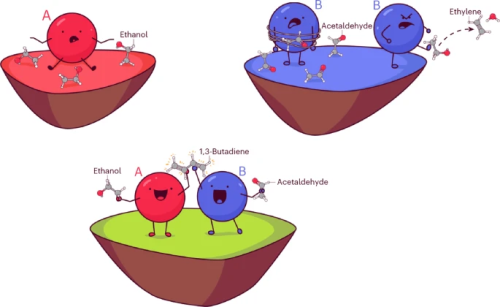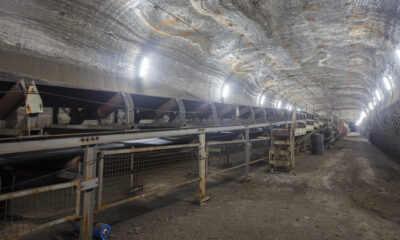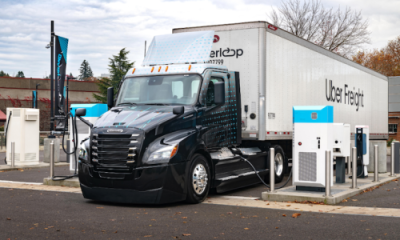Energy & Critical Metals
KAUST team seeks improved catalysts for Lebedev ethanol-to-butadiene process for renewable rubber
Butadiene, an essential component of synthetic rubber, is currently produced by the petrochemical industry from fossil reserves. Butadiene can also be…

Butadiene, an essential component of synthetic rubber, is currently produced by the petrochemical industry from fossil reserves. Butadiene can also be produced from ethanol by one of two primary methods: Lebedev, which converts ethanol over one catalyst in one reactor, and Ostromisslensky, which converts a mixture of ethanol and acetaldehyde in a two-reactor system. A 2017 analysis by a Ukrainian/French team (Kyriienko et al.) suggested that the Lebedev method holds more potential than the Ostromisslensky.
The basic Lebedev process, developed in the 1930s, includes (1) acetaldehyde (AA) formation from ethanol (EtOH); (2) aldol condensation of AA to crotonaldehyde; (3) Meerwin-Ponndof-Verley (MPV) reduction of crotonaldehyde with ethanol to crotyl alcohol and AA; and (4) dehydration of crotyl alcohol to 1,3-butadiene. Selectivity of the process depends upon the nature, strength and amount of acidic and basic sites on the catalyst surface, according to Kyriienko et al.
The conventional Lebedev process is driven by silica-magnesia catalysts that are produced by an unusual method called wet kneading. The method involves combining solid catalyst precursors in water under continuous mixing. However, improved wet-kneaded catalysts have mainly been discovered by trial and error.
Now, researchers at KAUST, with colleagues in the Netherlands, are using solid-state nuclear magnetic resonance spectroscopy to study silica-magnesia catalyst formation under real wet-kneading conditions. A paper on their work appears in Nature Catalysis.
We found that two different catalyst particles are formed, based on the cross-deposition of silicon species onto magnesia and magnesium species onto silica.
—Sang-Ho Chung, a research scientist in the labs of Javier Ruiz-Martinez, with whom he co-led the work
Chung et al.
Crucially, they showed that magnesium silicates on the silica particles tend to produce ethylene as an undesired side product. With that understanding, the team could synthesize just the catalyst particles that are active for butadiene production and avoid the particles that produce ethylene, Chung said. The team also showed that the best catalysts also had certain active sites in very close proximity.
This has helped us to work on the next generation of catalysts for this process. We are making good progress and already have an even more selective version, which could be a key step for commercializing the process.
—Javier Ruiz-Martinez
Resources
-
Pavlo I. Kyriienko, Olga V. Larina, Sergiy O. Soloviev, Svitlana M. Orlyk, Christophe Calers, and Stanislaw Dzwigaj (2017) “Ethanol Conversion into 1,3-Butadiene by the Lebedev Method over MTaSiBEA Zeolites (M = Ag, Cu, Zn)”
ACS Sustainable Chemistry & Engineering 5 (3), 2075-2083
doi: 10.1021/acssuschemeng.6b01728 -
Chung, SH., Li, T., Shoinkhorova, T. et al. (2023) “Origin of active sites on silica–magnesia catalysts and control of reactive environment in the one-step ethanol-to-butadiene process.” Nat Catal doi: 10.1038/s41929-023-00945-0

Uranium Exploration Company Announces Additional Staking in the Athabasca Basin
Source: Streetwise Reports 12/22/2023
Skyharbour Resources Ltd. announced an update from its Canada-based Falcon Project along with additional…
Tesla Launches New Mega Factory Project In Shanghai, Designed To Manufacture 10,000 Megapacks Per Year
Tesla Launches New Mega Factory Project In Shanghai, Designed To Manufacture 10,000 Megapacks Per Year
Tesla has launched a new mega factory…
Giving thanks and taking stock after “a remarkable year”
An end-of-year thank you to our readers, industry colleagues and advertisers before Electric Autonomy breaks from publishing until Jan. 2
The post Giving…



















